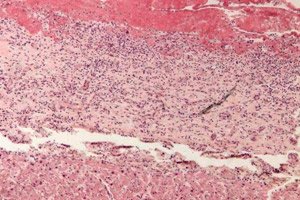
All iLive content is medically reviewed or fact checked to ensure as much factual accuracy as possible.
We have strict sourcing guidelines and only link to reputable media sites, academic research institutions and, whenever possible, medically peer reviewed studies. Note that the numbers in parentheses ([1], [2], etc.) are clickable links to these studies.
If you feel that any of our content is inaccurate, out-of-date, or otherwise questionable, please select it and press Ctrl + Enter.
Serous pericarditis
Medical expert of the article
Last reviewed: 05.07.2025

Inflammation of the fibrous sac surrounding the heart (pericardium), in which the predominant symptom is the formation and accumulation of serum exudate (effusion) in it - serous fluid, is diagnosed as serous pericarditis.
Epidemiology
According to clinical statistics, the prevalence of serous pericarditis in patients with systemic lupus erythematosus is estimated at 22-26%, with rheumatoid heart disease, on average, at 18%, and in the case of oncology - about 23%.
Causes serous pericarditis
Serous inflammation of the pericardium refers to the exudative (effusion) form of pathology, since there is a significant excess of production of pericardial fluid compared to its reabsorption - with the formation of serous or serous-fibrinous effusion in the pericardial cavity. It is by the composition of the effusion that such main types as simply serous and serous-fibrinous pericarditis are determined, which represent the same basic process and are the most common type of this condition. [ 1 ]
Serous pericarditis is usually not associated with infectious inflammation, for example, it develops with rheumatoid arthritis, which can affect the cardiovascular system with the development of rheumatic carditis or rheumatoid heart disease.
Other causes of serous inflammation of the pericardium include systemic lupus erythematosus (SLE), [ 2 ] myocardial infarction, [ 3 ] heart trauma or cardiac surgery – as an immune system reaction in the form of postcardiotomy syndrome or Dressler syndrome. [ 4 ] In addition, such inflammation of the pericardium may be associated with renal failure and excessive nitrogen levels in the blood (azotemia), with malignant neoplasms in the chest and mediastinum and their radiation therapy.
But there is also serous-purulent pericarditis - with the presence of effusion with pus in the pericardial sac. And this is already infectious pericarditis, the causes of which can be:
- tuberculosis - with exudative tuberculous pericarditis;
- infective endocarditis;
- generalized sepsis in case of development of systemic inflammatory response syndrome.
The most common bacterial causative agents of inflammation are streptococci and staphylococci, and among viruses - RNA enteroviruses Coxsackie viruses.
Also read: Pericarditis: General Information
Risk factors
Serous and serous-fibrinous pericarditis develop as a result of the already mentioned diseases and pathological conditions, and their presence in the anamnesis is a risk factor for inflammation of the pericardium with the formation of effusion in its cavity. [ 5 ]
Pathogenesis
In the absence of inflammation, the volume of fluid in the pericardial cavity does not exceed 50 ml, its composition is filtered blood plasma and is necessary to reduce friction between the moving heart and adjacent tissues. For more details, see - Fluid in the pericardial cavity
In the case of serous pericarditis, the amount of this fluid increases with the formation of exudative pericardial effusion. Specialists explain the pathogenesis of this process by the development of a reaction of the immune system with a characteristic activation of inflammatory mediators, in response to which the permeability of the walls of the smallest vessels supplying blood to the pericardial tissue increases, which leads to exudation (from the Latin exsudare - to secrete, to sweat).
Serous exudate can also be produced by mesothelial cells of the inner serous layer of the pericardium (pericardium serosum).
More information in the article - Exudative pericarditis
Symptoms serous pericarditis
If the formation of effusion into the pericardial cavity occurs slowly, noticeable signs of the pathological process may be absent. But when the volume of pericardial effusion increases, symptoms such as:
- dyspnea;
- discomfort when breathing in a lying position;
- cough;
- dizziness, weakness, feeling of heaviness in the chest;
- increased heart rate;
- chest pain of varying intensity – behind the breastbone or on the left side;
- swelling of the abdomen or lower extremities.
With rheumatoid arthritis, body temperature usually rises. And with post-infarction syndrome (usually occurring 10-30 days after a heart attack)
Serous pericarditis may be accompanied by fever, friction rub on auscultation, pleurisy and pleural effusion.
Complications and consequences
Serous and serous-fibrinous pericarditis, especially recurrent, can lead to a complication in the form of scarring of the space between the two layers of the pericardium, which limits the movement of the heart during each contraction.
As a result of the involvement of the heart muscle in the inflammatory process, atrial fibrillation develops.
In patients with rheumatic heart disease, the consequences of pericarditis include the development of focal calcium deposits in the pericardium.
In addition, rapid accumulation of fluid in the pericardium can cause cardiac tamponade - compression of the pericardium, often requiring surgical opening of the pericardium to remove excess fluid. [ 6 ]
Diagnostics serous pericarditis
How is serous pericarditis diagnosed - what tests are needed, what does instrumental diagnostics include, and what diseases should be excluded by differential diagnostics - is described in detail in the publication Diagnosis of Pericarditis
Treatment serous pericarditis
Serous pericarditis is often self-limiting, and nonsteroidal anti-inflammatory drugs remain the first-line treatment.
All details in the material - Treatment of pericarditis
Prevention
The essence of prevention of serous inflammation of the pericardium comes down to the timely detection and treatment of etiologically related diseases (infectious and non-infectious) and pathological conditions.
Forecast
The prognosis of the outcome of serous pericarditis is complicated not only by the possibility of its recurrence (in 15-32% of cases) and persistent chronic inflammation, but also by the threat of life-threatening cardiac tamponade.

